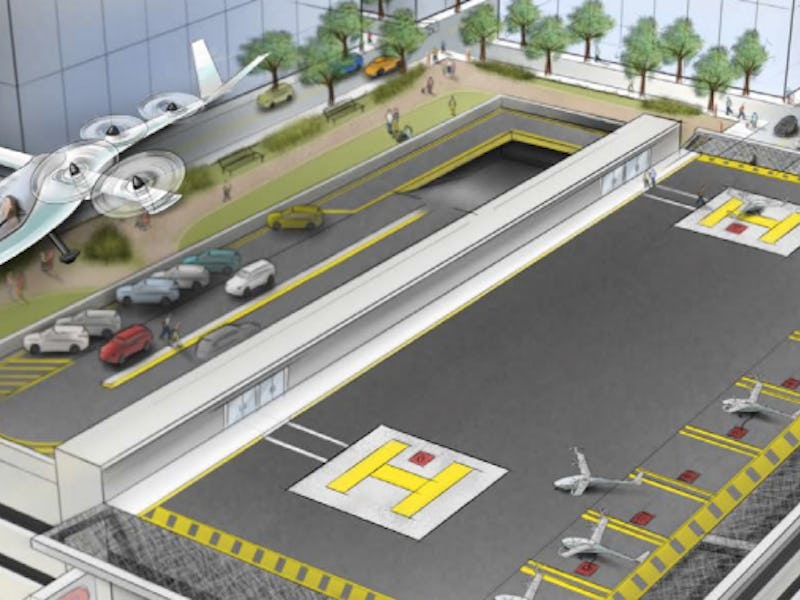Contrary to popular belief, UberAir isn’t actually building a flying car. But that doesn’t mean the company won’t be able to get you off the ground in the future. On Tuesday, Uber’s Chief Product Officer Jeff Holden announced that the ride-sharing company had entered into signed partnerships with five major aerospace companies to explore the possibilities of an all-electric, vertical take-off and landing vehicle.
During the company’s first annual Elevate Summit, which runs April 25-27, Holden announced the company would be working with Bell Helicopters, Aurora Flight Sciences, Pipistrel Aircraft, Embraer, and Mooney. The first air route in the U.S. will operate in the Dallas-Fort Worth metropolitan area, the company announced, and it hopes to have a working air commuter system by 2020.
That system, according to Holden, doesn’t exactly look like a “flying car.” Holden said that he hates the term, and would prefer to contextualize it with the phrase “urban aviation.” What this looks like, namely, is using airspace to reinvent medium-length commutes in metropolitan areas through a variety of means, one of which is short-hop air travel. Holden pointed to the San Francisco bay area as an example — the commute from San Jose, at the south tip of the bay, to San Francisco, on the eastern isthmus, can take up to two hours in traffic. You can do the same distance, cutting across the water, in 15 minutes by air.
The traditional notion of a flying car is a vehicle that both drives on normal roads and can take flight is a logistical and practical nightmare that will probably kill people if it’s not fully autonomous (not everyone is cut out to be a pilot).
Take an UberX to the vertiport, get on an UberAir, hop in another UberX when you land.
Uber isn’t trying to build a multipurpose vehicle yet, instead envisioning a system of “vertiports” where commuters can board a small aircraft for a short-hop flight. If you think that sounds like Uber is just now discovering that helicopters exist, well, you’re half right, but the company doesn’t see traditional single-rotor choppers as a viable option going forward (they’re too expensive and dangerous for mass transit). The company instead wants a short-range VTOL craft think a ducted-fan design like Aurora’s X-Plane or Airbus’s Pop.up system.
The system would be “start piloted,” according to Holden, and be held to safety standards “twice as safe as driving a car.” Uber’s record with regulatory agencies is far from stellar, however, so it appears the company is banking on its partnerships with established aerospace brands with good reputations to assuage potential skepticism (to some customers, it might not seem like a good idea to entrust flight safety to a company that neglects to fill out permit paperwork even after its self-driving cars run red lights).
